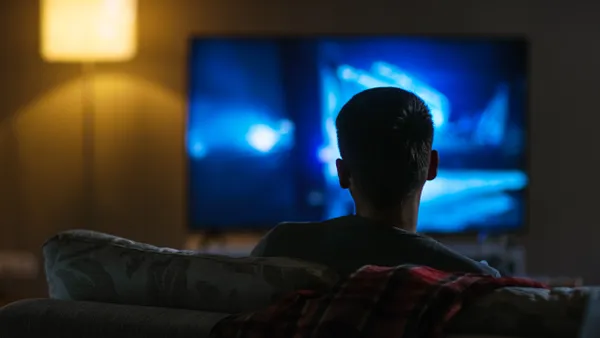Consumers are faced with more streaming entertainment options than ever. However, despite the variety of choices — or maybe partly because of it — what was once perceived as a major benefit of streaming, namely its ad-free nature, is increasingly disappearing.
With the introduction of more free services and an influx of ad-supported programing, it is clear the streaming landscape is in flux. While some bundling options remain, the current state of entertainment media cannot maintain itself. User-supported business modeling has seemingly failed, from the consumer, marketing and creative industry standpoints. The ongoing Writers Guild of America strike, which is happening in part over the lack of residuals paid out by streaming services, is indicative of such.
“People said for decades, '...We don't want to have to pay for channels that we don't want’… Well, we've given them what they wanted, right? Now, they can get a la carte streaming services, and it's getting out of control,” said Adriana Waterston, executive vice president and insights and strategy lead, Horowitz Research Division of M/A/R/C Research.
However, whatever the new model is that emerges from the current turmoil may require an old solution.
Bye-bye ad-free programming
A common complaint about the current streaming landscape is the overwhelming number of options. The mounting cost of subscribing to multiple services has encouraged consumers to unsubscribe to those they don’t use as often. Services have responded by providing less-expensive ad-supported tiers and there has been an increase in free services as well.
“The rise of consumption of free streaming services has really been dramatic over the past number of years,” said Waterston.
The percentage of the population subscribed to subscription video on demand (SVOD) services, such as Netflix, has remained stable at 67% since 2019. However, those using over-the-top (OTT) services, such as YouTube, has skyrocketed from 42% in 2019 to 69% in 2023, while those using multichannel video programming distributors (MVPD), such as Fios, has rapidly declined, according to a recent report by Horowitz.
The March 2023 report, “State of Media, Entertainment & Tech: Subscriptions 2023,” compared subscription rates for traditional providers with the newer providers and found that 39% of consumers — the largest portion — subscribe only to subscription video services while 22% of the population subscribes to a MVPD alone. Thirty percent of consumers combine the two, while just 9% of the population pays for neither. Those subscribed to traditional MVPD platforms have fallen from 82% in 2019 to 52% in 2023.
Netflix, Prime Video, Hulu, Disney+ and HBO Max (now branded as Max) remain the most popular paid streaming services, according to the research. On the flip side, YouTube, Tubi, Peacock, Roku and Pluto are currently the most popular free streaming services.
The survey was conducted in both English and Spanish and consisted of a nationally representative sample of 2,200 content viewers ages 18 and older. Those surveyed were also head of household. Data collected included demographic, life stage, behavioral and subscription habits.
A paradox of choice
The breakdown of who gravitates to which streaming services is divided. Latinx and Black consumers are more likely to have access to SVOD services in general, at rates of 86% and 87%, respectively, according to the report. These rates are slightly higher than the 83% seen in Asian and White consumers. While this gap may not seem large, it gets much more expansive when looking at the rates of use for free services. Eighty percent of Black consumers and 78% of Latinx consumers are more likely to use free streaming services, compared to 68% of Asian consumers and 65% of White consumers, according to the report.
The insight into viewer habits also shows consumers find content representative of themselves and their experiences important. Over half (58%) of Latinx consumers say Spanish-language content is important to them, with 46% of Asian consumers saying content in Asian languages is important to them. For 60% of Black consumers, having access to Black-focused content is a priority.
Are you there cable? It’s me, the consumer
As streaming has grown and matured as a channel, the user experience has evolved and increasingly lines up with traditional ad-supported linear programming, an evolution that could benefit legacy providers more than streaming’s relative newcomers.
“When we asked consumers if they were interested in a bundle of streaming services from one provider, two out of three consumers said they were interested. And then when we asked those people that said they were interested, which provider they would want to subscribe to… And what was really interesting was the current telecom and cable providers are still very much in consideration for being the preferred provider for that kind of bundle,” said Waterston.
It’s important to note that this doesn’t mean streaming is going to go away, said Waterston. Merely, the industry is at an inflection point right now, and it has yet to be seen who will emerge the winner of this debate, whether it be traditional cable companies or Big Tech, such as Google or Amazon. What is clear, the big benefit of streaming services — that they are ad-free — is no longer the status quo.
“Ad free was a huge benefit of streaming when streaming first came out... Because what it was was Netflix, and Netflix was always ad-free,” said Waterston “So that sets the expectation that consumers have that, 'well, streaming is great, because I don't have to watch ads.' Well, that's not true anymore. And it's not going to be true. So the consumer just has to get used to it.”






















